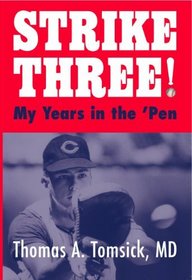Search -
Strike Three!
Strike Three
Author:
Strike Three 3! My Years in the 'Pen is a story of the top strikeout pitching staff in the history of the American League. The major focus of the book is the impressive strikeout records of the Cleveland Indians pitching staff of 1964-68, led by the Big 3 of Sam McDowell, Sonny Siebert, and Luis Tiant. The hypothesis is presented that this staff... more »
Author:
Strike Three 3! My Years in the 'Pen is a story of the top strikeout pitching staff in the history of the American League. The major focus of the book is the impressive strikeout records of the Cleveland Indians pitching staff of 1964-68, led by the Big 3 of Sam McDowell, Sonny Siebert, and Luis Tiant. The hypothesis is presented that this staff... more »
ISBN-13: 9780981726960
ISBN-10: 0981726968
Publication Date: 6/23/2010
Pages: 220
Rating: ?
ISBN-10: 0981726968
Publication Date: 6/23/2010
Pages: 220
Rating: ?
0 stars, based on 0 rating
Publisher: Cincinnati Book Publishers
Book Type: Paperback
Members Wishing: 1
Reviews: Amazon | Write a Review
Book Type: Paperback
Members Wishing: 1
Reviews: Amazon | Write a Review
Genres:




